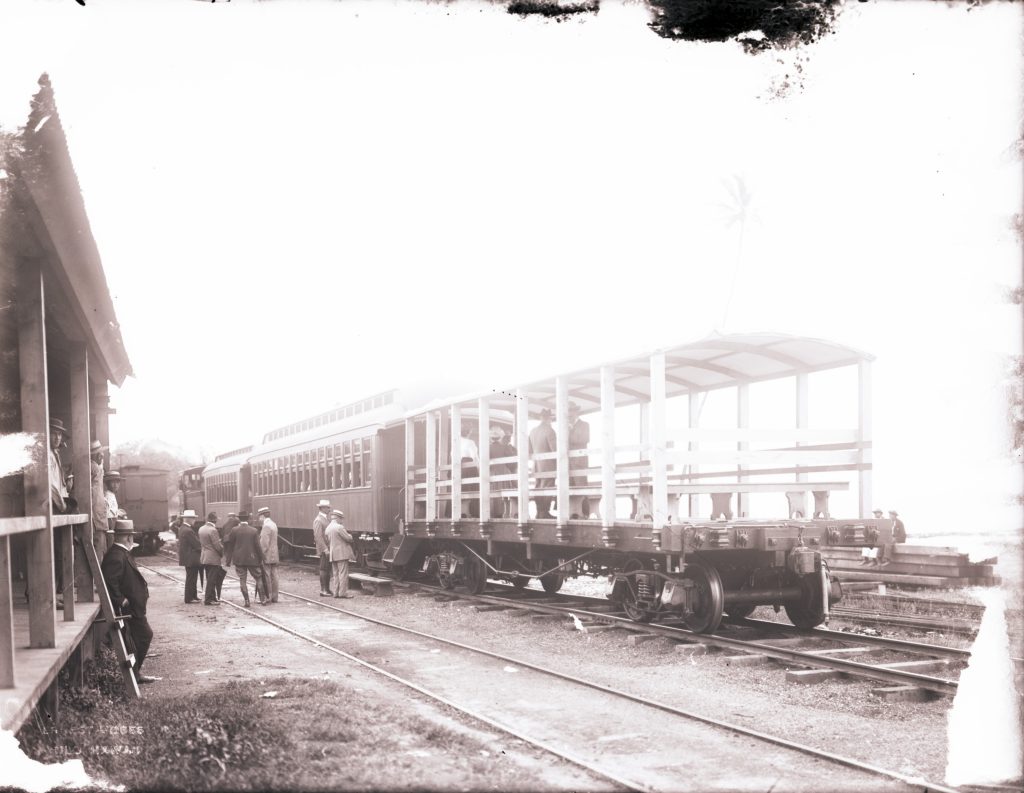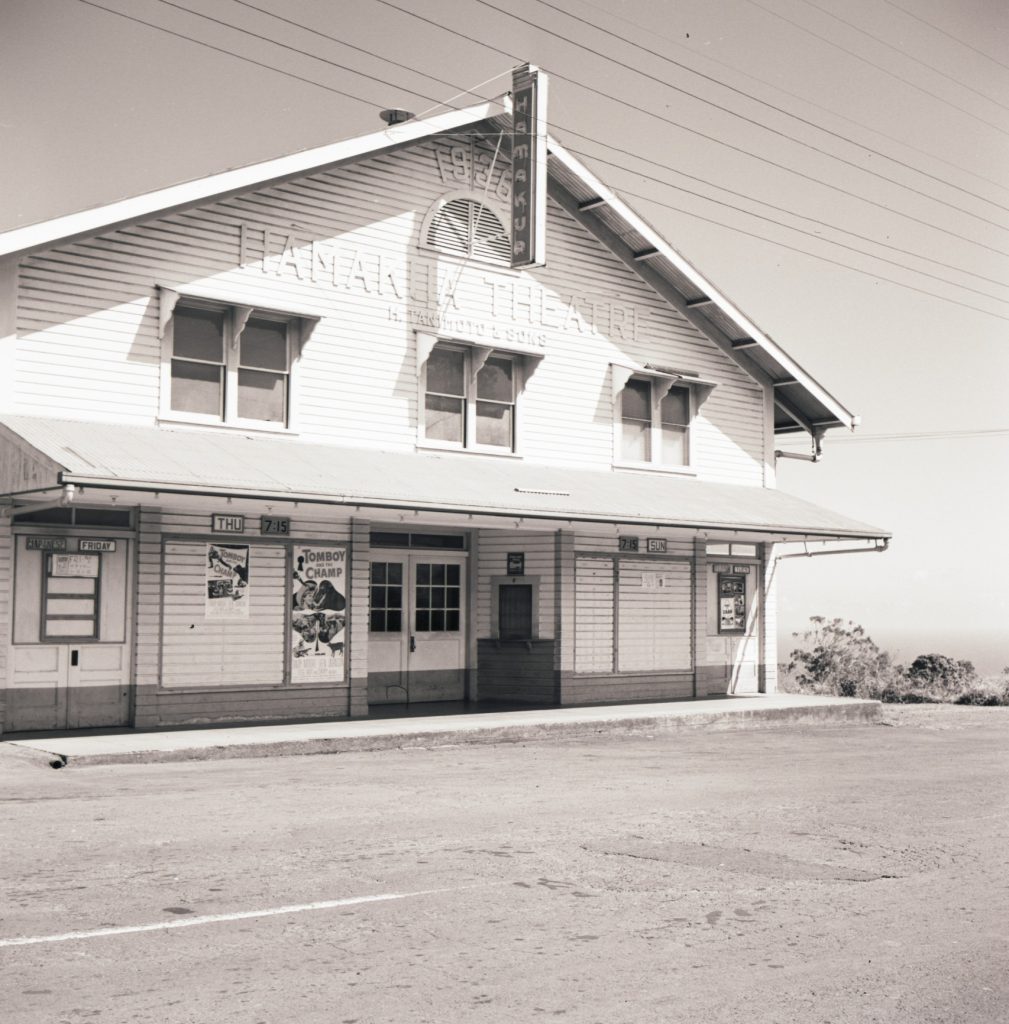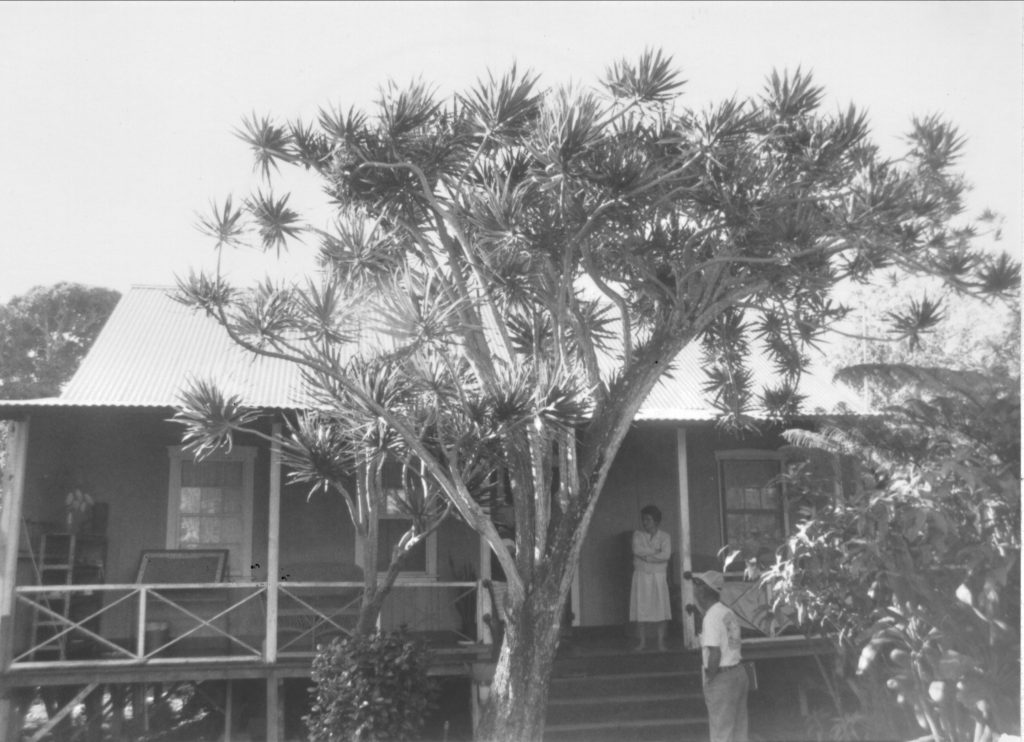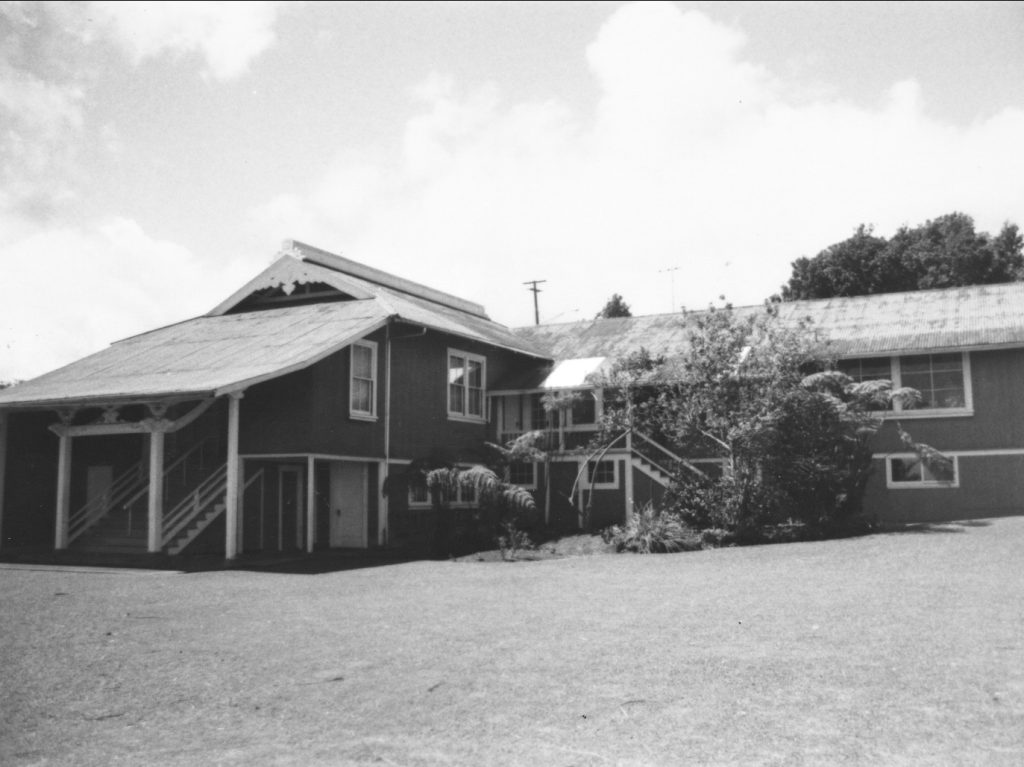Englishmen Theophilus H. Davies and Charles R. Notley, Sr. saw the potential for sugar production in the Hāmākua district of Hawaiʻi Island. They started the Hamakua Mill Company in 1877. In the following year, Notley and his crew began planting sugarcane at Paʻauilo. The plantation fields stretched three miles across at their widest point along the ocean cliffs and six miles up the slopes of Mauna Kea to an elevation of 2000 feet. Davies hired the Honolulu Iron Works to build a mill. Like other plantation towns, Paʻauilo included a company store, a school, churches, temples, an auto repair shop and other businesses.
The Lyman Museum preserves various sugar industry records. The Hamakua Sugar Company, organized in 1984, consolidated the land of seven original companies including the Hamakua Mill Company. The collection of the Hamakua Sugar Company contains records related to road, sewer, and tunnel projects in Paʻauilo. To learn more, the Archives is open for research by appointment: https://lymanmuseum.org/archives/.
Note: Hawaiian diacritical marks comprise just two symbols: the ʻokina (glottal stop) and the kahakō (macron). We use them with Hawaiian place names, but do not add them to proper names if a family or a company does not use them.





